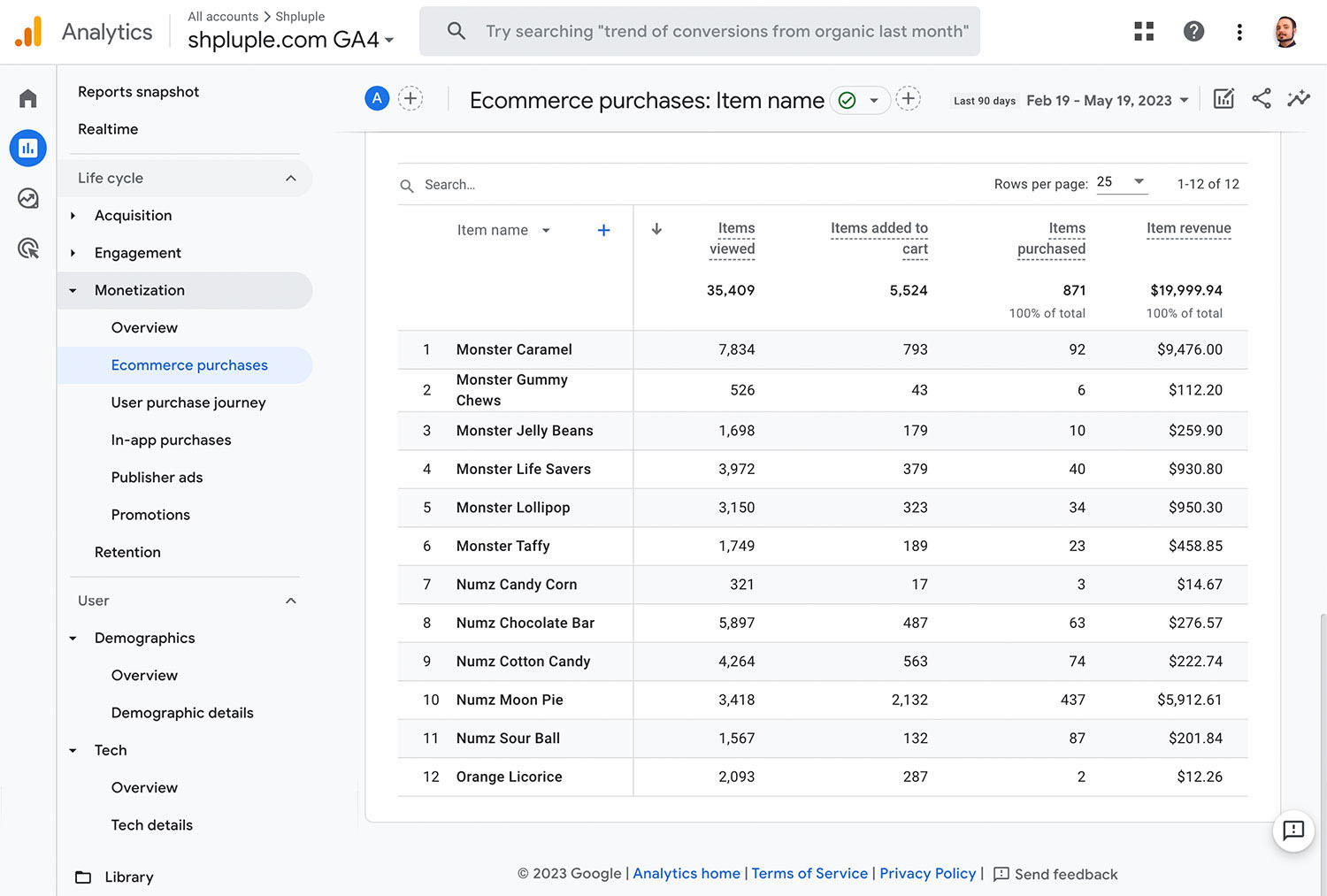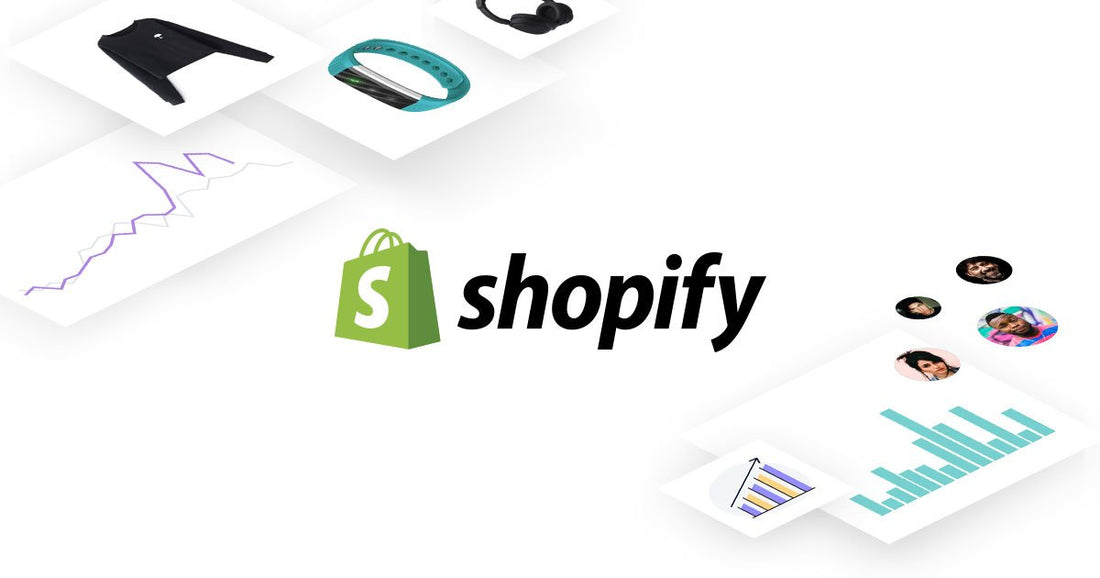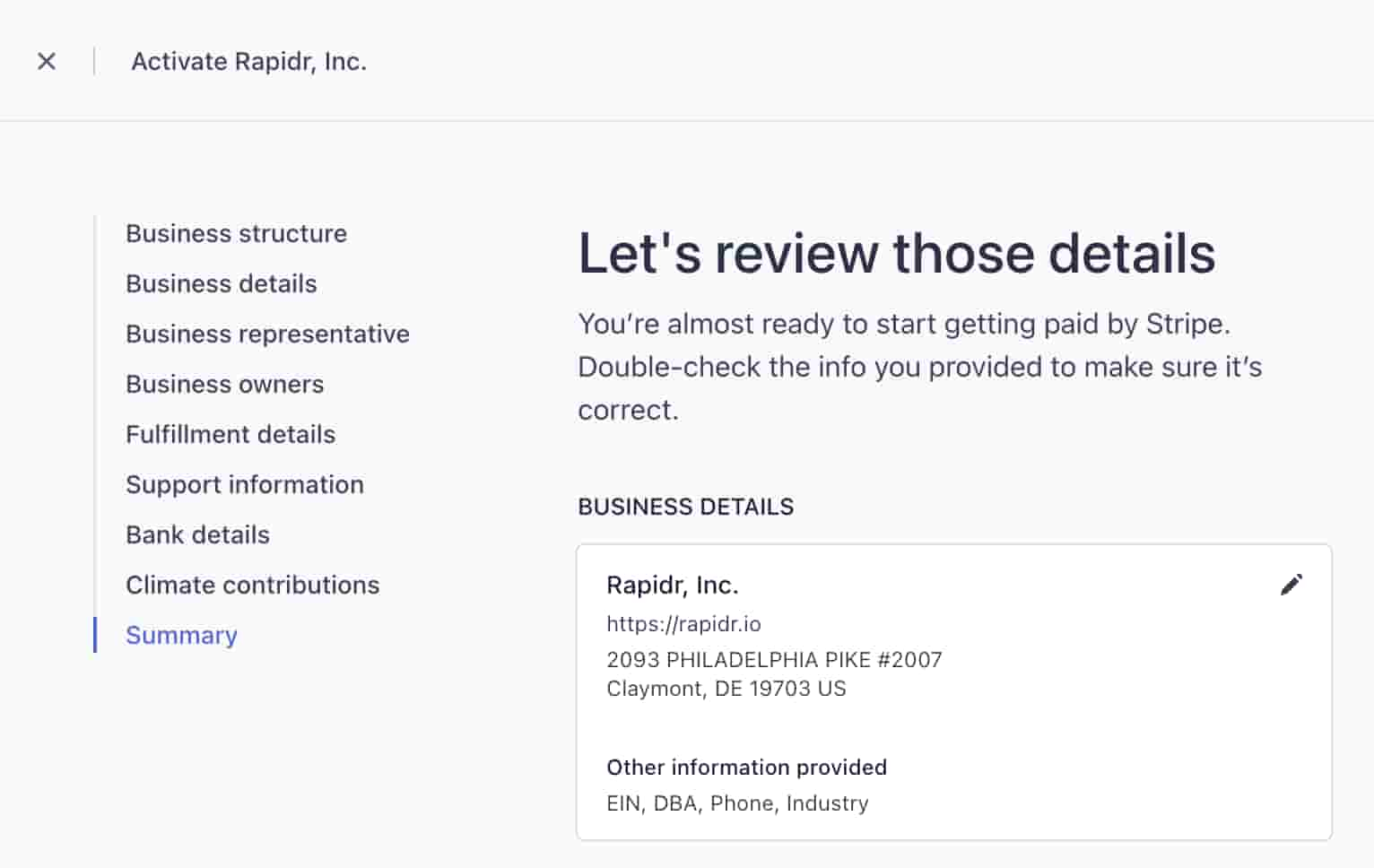
Published: Sep 28, 2024
10 Steps to Launch an Online Business from Scratch in 2024
10 Steps to Launch an Online Business from Scratch in 2024
Becoming your own boss, setting your own hours, working from wherever… starting an online biz sounds dreamy, right? Well, buckle up buttercup, because I’m about to spill the tea on how to make that dream a reality! Elena Martinez here—E-Commerce Maven 🇺🇸 reporting for duty to guide you on this wild ride.
TLDR: What does it really take to get an online business off the ground? Let's break down the nitty gritty details...
1️⃣ How much money do I need to start an online business?
While you can technically launch with just a few hundred bucks for basics like a domain name and web hosting, realistically budget at least $500-1000 to get all the pieces in place, like a professional website, initial marketing, and any inventory if you’re selling physical products. The beauty is, it’s still way cheaper than a traditional brick-and-mortar!
2️⃣ Do I need business experience to start an online business?
Nope, no fancy degree required! Passion, a willingness to learn, and some good ol’ fashioned hustle can take you far. Plenty of online courses, blogs, and resources exist to learn the ropes of digital entrepreneurship. The key is starting simple, testing and learning as you go.
3️⃣ How long does it take to start making money with an online business?
Don’t expect overnight riches, but with focused effort, most online businesses can start seeing some revenue within 3-6 months. Strategies like pre-selling before your official launch, driving traffic with paid ads, and tapping into existing audiences can speed up that first sale!
Table of Contents
- Find Your Big Idea
- Define Your Target Audience
- Build Your Website
- Craft Your Brand
- Determine Your Offering
- Define Your Core Product or Service
- Outline Key Features and Benefits
- Set Your Pricing Strategy
- Consider Product Variations
- Plan for Upsells and Cross-sells
- Decide on Manufacturing/Fulfillment
- Create Detailed Product Descriptions
- Showcase with High-Quality Visuals
- Plan Your Inventory (if applicable)
- Outline Your Service Process
- Get Customer Feedback Early
- Get Legally Legit
- Master Your Finances
- Prep for Launch
- Keep the Momentum Going Post-Launch
- Outline Your Marketing Strategy
Find Your Big Idea
Ready to kick off your online biz journey? It all starts with that lightbulb moment! Let’s explore some tried-and-true ways to uncover your million-dollar idea:
Solve a Problem You’ve Faced
Think about your own life. What annoys you? What could be easier? I stumbled on my first successful product idea when I couldn’t find stylish laptop bags for women. Boom - problem solved and a business was born!
Tap Into Your Passions
What lights you up? For me, it was always fashion and tech. Combining those led to my e-commerce accessories brand. Your hobby could be the key to your empire.
Spot a Gap in the Market
Keep your eyes peeled for what’s missing. Browse Kickstarter for inspiration or dig into Google Trends to spot rising interests.
Improve on Existing Products
You don’t need to reinvent the wheel. Sometimes a tweak to something that already exists is all it takes. My friend Sarah took boring reusable water bottles and added customizable designs - now she’s killing it!
Listen to Customer Complaints
What are people constantly griping about online? Those complaints are golden opportunities. I once overheard someone at a Starbucks in downtown Austin complaining about tangled earbud cords. Hello, wireless earbud case business!
Capitalize on Your Skills
Got a knack for graphic design? Maybe it’s time to launch that Etsy shop selling digital planners. Love writing? There’s a huge market for ghostwriting services.
Ride the Wave of Trends
Keep your finger on the pulse of what’s hot. The explosion of TikTok led to tons of opportunities for creating viral video content. What’s the next big thing?
Test Your Idea
Once you’ve got a concept, don’t keep it to yourself! Run it by friends, family, and even strangers. Create a simple landing page to gauge interest. You can use tools like Launchrock to set this up in minutes.
Conduct Market Research
Dive deep into your potential market. Use Facebook Audience Insights to understand demographics. Check out competitors on Amazon to see what’s selling well.
Start Small, Think Big
Remember, you don’t need the perfect idea right out of the gate. My first e-commerce venture selling handmade jewelry barely broke even. But it taught me invaluable lessons that led to bigger wins down the road.
The key is to start somewhere and be willing to pivot. Your “big idea” might evolve as you go, and that’s totally okay! Now get brainstorming – your future customers are waiting!
Define Your Target Audience
Knowing exactly who you’re selling to is crucial for your online business success. Let’s dive into how to pinpoint your ideal customer:
Create a Detailed Customer Avatar
Start by building a fictional representation of your perfect customer. Give them a name, age, and backstory. For my laptop bag business, I created “Sarah,” a 28-year-old marketing manager who values both style and function.
Demographic Details
Nail down the basics:
- Age Range: Are you targeting millennials or retirees?
- Gender: Is your product geared towards a specific gender?
- Income Level: What’s their spending power?
- Location: Are you focusing on urban dwellers or suburban families?
- Education: Does your offering appeal to college grads or trade professionals?
Psychographic Insights
Dig deeper into their mindset:
- Values: What drives their decisions? For Sarah, it was sustainability and career growth.
- Interests: What do they do in their free time?
- Pain Points: What problems keep them up at night?
- Goals: What are they striving for in life?
Online Behavior
Figure out where they hang out digitally:
- Social Media Platforms: Are they Instagram addicts or LinkedIn power users?
- Content Consumption: Do they prefer blogs, podcasts, or YouTube videos?
- Shopping Habits: Are they impulse buyers or careful researchers?
Research Methods
Don’t just guess – gather real data:
- Google Analytics
 If you have an existing website, dive into visitor demographics.
If you have an existing website, dive into visitor demographics. - Social Media Insights: Use platform analytics to understand your followers.
- Surveys: Create quick polls using tools like SurveyMonkey to get direct feedback.
- Competitor Analysis: Who are your competitors targeting? Look at their marketing materials and social media engagement.
Test and Refine
Your initial target audience might not be perfect. Be ready to adjust:
- A/B Testing: Try different messaging to see what resonates.
- Customer Interviews: Talk directly to early customers to gain deeper insights.
- Analytics Review: Regularly check your website and social media data to spot trends.
Multiple Personas
Don’t be afraid to have more than one target audience. My laptop bag business eventually expanded to include a “Tom” persona – a 35-year-old frequent business traveler.
Tailor Your Approach
Once you’ve defined your audience, use that info to guide everything:
- Product Development: What features would Sarah or Tom love?
- Marketing Messages: Speak directly to their pain points and aspirations.
- Channel Selection: Focus your efforts where your audience actually hangs out.
Remember, defining your target audience isn’t a one-and-done task. As your business grows, keep refining your understanding of who you’re serving. The better you know your customer, the more effectively you can meet their needs and grow your online empire!
Build Your Website
Building a professional website is crucial for your online business. Let’s break down the key steps:
Choose Your Website Platform
Picking the right platform sets the foundation:
- Shopify
 Great for e-commerce, with built-in tools for selling products.
Great for e-commerce, with built-in tools for selling products. - WordPress Versatile platform that’s good for blogs and content-heavy sites.
- Squarespace User-friendly with beautiful templates, ideal for portfolios.
I started with Shopify for my first online store. Its drag-and-drop interface made setup a breeze.
Secure Your Domain Name
Your domain is your online address. Keep it short, memorable, and relevant to your brand. I snagged “StyleTechBags.com” for my laptop bag business.
Use a registrar like GoDaddy or Namecheap to check availability and purchase your domain.
Design Your Site Layout
Focus on creating a clean, intuitive user experience:
- Homepage: Make a strong first impression with clear messaging and calls-to-action.
- About Page: Tell your brand story and build trust with potential customers.
- Product/Service Pages: Showcase what you’re offering with high-quality images and detailed descriptions.
- Contact Page: Make it easy for customers to reach you.
Create Compelling Content
Your website copy needs to engage and convert:
- Headlines: Grab attention and communicate your value proposition.
- Product Descriptions: Highlight benefits, not just features.
- Blog Posts: Establish authority in your niche and improve SEO.
Optimize for Search Engines (SEO)
Help customers find you through search:
- Keywords: Research and integrate relevant terms throughout your site.
- Meta Descriptions: Write compelling summaries for each page.
- Image Alt Text: Describe images for better accessibility and SEO.
Ensure Mobile Responsiveness
With more people browsing on phones, your site must look great on all devices. Test thoroughly on different screen sizes.
Set Up Analytics
Install Google Analytics to track visitor behavior and make data-driven decisions.
Test Everything
Before launch, rigorously test your site:
- Links: Ensure all internal and external links work.
- Forms: Test contact forms and newsletter signups.
- Payment Processing: If selling products, run test transactions.
Launch and Iterate
Once live, continuously improve based on user feedback and analytics data. My first site design was far from perfect, but I kept refining it based on customer comments and behavior patterns.
Remember, your website is often a customer’s first impression of your business. Make it count!
Craft Your Brand
Crafting a memorable brand identity is crucial for standing out in the crowded online marketplace. Let’s dive into the key elements:
Develop Your Brand Story
Your brand story should resonate with your target audience. When I started my laptop bag business, I focused on the frustration of carrying bulky, unfashionable bags to client meetings. This personal experience became the foundation of my brand narrative.
Choose a Unique Business Name
Pick a name that’s catchy, relevant, and available as a domain. I brainstormed dozens before landing on “TechChic” for my brand. Use tools like Namecheck to verify availability across platforms.
Design Your Logo
Your logo is the visual cornerstone of your brand. Keep it simple and scalable. For TechChic, I worked with a graphic designer to create a sleek icon combining a laptop silhouette with a purse handle.
Define Your Color Palette
Colors evoke emotions and set the tone for your brand. I chose a sophisticated palette of navy, silver, and blush pink for TechChic to appeal to professional women. Use tools like Coolors to experiment with color schemes.
Craft Your Brand Voice
Your brand voice should reflect your personality and resonate with your audience. TechChic’s voice is confident, friendly, and slightly witty - mirroring the professional women we serve.
Create a Unique Value Proposition (UVP)
Your UVP clearly states why customers should choose you over competitors. TechChic’s UVP became: “Sleek laptop bags that transition seamlessly from boardroom to happy hour.”
Develop Brand Guidelines
Document your brand elements to ensure consistency:
- Logo usage and placement
- Typography choices
- Color codes
- Tone of voice examples
- Image style guidelines
Design Brand Assets
Create a suite of branded materials:
- Business cards
- Email signatures
- Social media profile images
- Packaging designs (if applicable)
Trademark Protection
Consider trademarking your business name and logo. I registered TechChic with the USPTO to protect our brand as we grew.
Build Brand Consistency
Apply your brand elements consistently across all touchpoints:
- Website design
- Social media profiles
- Marketing materials
- Customer service interactions
Remember, your brand is more than just a logo - it’s the entire experience you create for your customers. As you build your online business, let your brand evolve and grow alongside it. My TechChic brand has undergone subtle refinements over the years, always staying true to our core identity while adapting to changing market trends.
Determine Your Offering
Nailing down the specifics of your product or service is crucial for your online business success. Let’s dive into how to finalize your offering:
Define Your Core Product or Service
Get crystal clear on what you’re selling:
- Physical Products: Are you selling handmade crafts, curated collections, or manufactured goods?
- Digital Products: Think eBooks, online courses, or software.
- Services: Consulting, coaching, or creative work like design or writing.
When I launched TechChic, our core offering was stylish laptop bags for professional women.
Outline Key Features and Benefits
Don’t just list features - focus on how they benefit your customer:
- Feature: Padded laptop compartment
- Benefit: Protects your expensive device from bumps and scratches
Set Your Pricing Strategy
Pricing can make or break your business. Consider:
- Cost-plus pricing: Calculate your costs and add a markup.
- Value-based pricing: Price based on the perceived value to the customer.
- Competitive pricing: Research what similar products/services are selling for.
For TechChic, we started with competitive pricing but eventually moved to value-based as we built our brand reputation.
Consider Product Variations
Offer options to cater to different customer needs:
- Sizes: Small, medium, large
- Colors: Classic black, bold patterns, seasonal collections
- Materials: Leather, vegan leather, waterproof nylon
Plan for Upsells and Cross-sells
Boost your average order value:
- Upsells: Offer a premium version of the product they’re considering.
- Cross-sells: Suggest complementary products (like a matching wallet with a purse).
Decide on Manufacturing/Fulfillment
If selling physical products, you have options:
- Dropshipping
 Products ship directly from the supplier to the customer.
Products ship directly from the supplier to the customer. - Print-on-demand Great for custom designs on t-shirts, mugs, etc.
- Manufacturing Work with a factory to produce your unique designs.
I started with a small manufacturing run for TechChic, eventually scaling up as demand grew.
Create Detailed Product Descriptions
Paint a vivid picture for your potential customers:
- Highlight unique selling points
- Address common customer questions
- Use persuasive language that speaks to your target audience
Showcase with High-Quality Visuals
Invest in professional product photography or create eye-catching digital mockups. For TechChic, we did lifestyle photoshoots showing our bags in real-world office and travel scenarios.
Plan Your Inventory (if applicable)
Don’t get caught with too much or too little stock:
- Start small to test the market
- Use pre-orders to gauge demand
- Consider just-in-time inventory management
Outline Your Service Process
If offering services, map out your client journey:
- Initial consultation
- Proposal/quote
- Project milestones
- Delivery and follow-up
Get Customer Feedback Early
Before going all-in, test your offering:
- Beta testing
 Offer your product/service to a small group at a discount in exchange for feedback.
Offer your product/service to a small group at a discount in exchange for feedback. - Focus groups: Gather potential customers to get their thoughts on your offering.
I gave sample bags to 20 professional women in Austin and incorporated their feedback before our official launch.
Remember, your offering isn’t set in stone. Be prepared to pivot based on market response and customer feedback. The key is to start with a solid foundation and be willing to adapt as you grow your online empire!
Get Legally Legit
Getting your legal ducks in a row isn’t the most exciting part of starting a business, but it’s crucial. Here’s how to make sure you’re on the up-and-up:
Choose Your Business Structure
Your business structure impacts taxes, liability, and more:
- Sole Proprietorship
 Simplest option, but you’re personally liable for business debts.
Simplest option, but you’re personally liable for business debts. - Limited Liability Company (LLC) Protects personal assets, flexible tax options.
- Corporation More complex, but offers strongest protection and potential tax benefits.
I started as a sole proprietor but switched to an LLC once my online store started growing. Chatted with a local accountant in Austin to figure out the best move for my situation.
Register Your Business Name
Make it official:
- Check if your business name is available in your state.
- File a DBA (“Doing Business As”) if you’re using a name different from your legal name.
Get Your EIN
An Employer Identification Number (EIN) is like a social security number for your business. You’ll need it to open a business bank account and file taxes. It’s free to get one from the IRS website.
Obtain Necessary Licenses and Permits
Requirements vary based on your location and industry:
- General Business License: Most cities/counties require this.
- Professional Licenses: Some fields (like consulting) may need specific credentials.
- Home Occupation Permit: If you’re running your biz from home.
Set Up a Business Bank Account
Keep personal and business finances separate:
- Shop around for business-friendly banks with low fees.
- Consider online-only banks for convenience.
Get Business Insurance
Protect yourself from potential risks:
- General Liability Insurance: Covers common business risks.
- Professional Liability Insurance: For service-based businesses.
- Product Liability Insurance: If you’re selling physical products.
Understand Tax Obligations
- Sales Tax: If you’re selling physical products, you’ll likely need to collect and remit sales tax.
- Income Tax: Set aside money for quarterly estimated tax payments.
- Self-Employment Tax: Covers Social Security and Medicare contributions.
Create Legal Documents and Policies
Cover your bases with:
- Terms of Service: Outline rules for using your website/products.
- Privacy Policy: Explain how you handle customer data.
- Return Policy: Clear guidelines for refunds and exchanges.
Protect Your Intellectual Property
- Trademark
 Register your business name and logo.
Register your business name and logo. - Copyright Protect original creative works.
- Patent For unique inventions or processes.
Stay Compliant
Set reminders for:
- Annual report filings
- License renewals
- Tax deadlines
Remember, while this stuff isn’t as fun as dreaming up product ideas, it’s super important. I learned the hard way when I almost missed a crucial tax deadline in my first year! When in doubt, don’t be afraid to consult with a lawyer or accountant who specializes in small businesses. It’s worth the investment to make sure you’re doing everything by the book.
Master Your Finances
Getting a handle on your finances is crucial for any online business. Let’s break down the key areas to focus on:
Set Up a Bookkeeping System
Start tracking your income and expenses from day one:
- QuickBooks Online Popular cloud-based accounting software for small businesses.
- Wave Free option great for startups and freelancers.
I started with a simple spreadsheet but quickly outgrew it. Switching to QuickBooks saved me hours of headaches come tax time.
Choose Your Payment Processors
Make it easy for customers to pay you:
- Stripe
 Great for online payments, with low fees.
Great for online payments, with low fees. - PayPal Widely recognized, good for international transactions.
- Square Ideal if you plan to sell in-person too.
Plan for Taxes
Don’t get caught off guard:
- Set aside 25-30% of your income for taxes.
- Make quarterly estimated tax payments to avoid penalties.
- Track deductible business expenses meticulously.
Create a Budget
Know where your money’s going:
- Forecast your revenue and expenses.
- Set aside funds for marketing, inventory, and other key areas.
- Review and adjust monthly.
Secure Startup Funding
If you need extra capital:
- Bootstrapping Using personal savings or revenue to fund growth.
- Small Business Loans Options from banks or online lenders like Kabbage.
- Crowdfunding Platforms like Kickstarter can help validate your idea and raise funds.
Manage Cash Flow
Keep your business liquid:
- Invoice promptly and follow up on late payments.
- Negotiate better payment terms with suppliers.
- Consider a line of credit for seasonal fluctuations.
Price Your Products Strategically
Don’t just guess at your pricing:
- Calculate your Cost of Goods Sold (COGS).
- Research competitor pricing.
- Test different price points to find the sweet spot.
Invest in Growth
Allocate funds for scaling your business:
- Marketing and advertising
- New product development
- Team expansion
Monitor Key Financial Metrics
Keep an eye on your business health:
- Profit Margin
 Aim for industry-standard margins.
Aim for industry-standard margins. - Customer Acquisition Cost (CAC) How much you spend to gain a new customer.
- Lifetime Value (LTV) The total value of a customer over time.
Consider Professional Help
Don’t be afraid to bring in experts:
- Hire an accountant for complex tax situations.
- Work with a financial advisor to plan for long-term growth.
Remember, solid financial management is the backbone of any successful online business. I learned this the hard way in my first year when I almost ran out of cash because I wasn’t tracking things closely. Now, I review my finances weekly and it’s made a world of difference. Stay on top of your numbers and you’ll be set up for sustainable growth!
Prep for Launch
The countdown to launch day is on! Let’s make sure you’re ready for liftoff:
Build a “Coming Soon” Page
Create buzz before you’re fully open:
- Use a tool like LaunchRock to set up a simple landing page.
- Tease your product or service with enticing visuals.
- Offer an email signup for launch notifications.
Run a Pre-Order Campaign
Get sales rolling early:
- Kickstarter or Indiegogo for physical products.
- Use your e-commerce platform’s pre-order feature.
- Offer early-bird discounts to incentivize purchases.
Reach Out to Press & Influencers
Start building relationships:
- Create a targeted media list in your niche.
- Craft a compelling pitch highlighting your unique angle.
- Offer exclusive samples or early access to key influencers.
Build Your Email List
Start nurturing potential customers:
- Offer a lead magnet (free guide, discount code, etc.).
- Use Mailchimp or ConvertKit to manage subscribers.
- Plan a series of pre-launch emails to build excitement.
Test Everything (Again)
Double-check all the technical details:
- Website functionality across devices.
- Payment processing.
- Email signup forms and automations.
- Analytics tracking.
Plan Your Launch Day Promotions
Create a buzz-worthy event:
- Facebook or Instagram Live product reveal.
- Limited-time launch day discounts.
- Exclusive bonuses for first X customers.
Prepare Customer Support
Be ready to handle questions:
- Set up a FAQ page.
- Create email templates for common inquiries.
- Consider using a chatbot for instant responses.
Stock Up on Inventory
Don’t get caught short-handed:
- Order more than you think you’ll need.
- Have a backup supplier lined up.
- Set up inventory alerts to reorder promptly.
Schedule Social Media Content
Build momentum across platforms:
- Use a tool like Hootsuite to pre-schedule posts.
- Create a content calendar for launch week.
- Prepare graphics and captions in advance.
Recruit Brand Ambassadors
Leverage your network:
- Reach out to friends, family, and colleagues.
- Provide them with shareable content and discount codes.
- Consider setting up an affiliate program.
Remember, launch day is just the beginning! I stayed up till 3 AM the night before TechChic went live, triple-checking everything. The adrenaline of those first sales made it all worth it. Stay flexible and be ready to troubleshoot on the fly. You’ve got this!
Keep the Momentum Going Post-Launch
Launching your online business is just the beginning. Here’s how to maintain that momentum and grow:
Prioritize Customer Service
Outstanding service builds loyalty:
- Respond to inquiries promptly (aim for under 24 hours).
- Use tools like Zendesk to manage customer communications.
- Create detailed FAQs to address common questions.
Gather and Showcase Reviews
Social proof is powerful:
- Send follow-up emails requesting feedback.
- Use a platform like Yotpo to collect and display reviews.
- Respond to all reviews, especially negative ones.
Optimize Your Conversion Rate
Small tweaks can lead to big gains:
- Use Google Analytics to identify weak points in your sales funnel.
- A/B test elements like product descriptions, CTAs, and checkout process.
- Consider adding live chat for instant customer support.
Expand Your Product Line
Keep customers coming back:
- Survey existing customers about what they’d like to see next.
- Look for complementary products to your current offerings.
- Consider seasonal or limited-edition items to create urgency.
Leverage Email Marketing
Nurture your subscriber list:
- Segment your audience for targeted campaigns.
- Use Klaviyo for e-commerce focused email marketing.
- Test different subject lines, send times, and content types.
Refine Your SEO Strategy
Improve your organic search presence:
- Conduct regular keyword research using tools like Ahrefs.
- Create high-quality, SEO-optimized content consistently.
- Build quality backlinks through guest posting and partnerships.
Explore New Marketing Channels
Diversify your traffic sources:
- Experiment with TikTok ads if targeting a younger demographic.
- Try influencer partnerships on Instagram.
- Consider podcast sponsorships in your niche.
Analyze and Adjust
Data-driven decisions are key:
- Set up custom reports in Google Analytics.
- Track key metrics like customer acquisition cost (CAC) and lifetime value (LTV).
- Hold monthly strategy sessions to review performance and set new goals.
Foster Community
Build relationships beyond transactions:
- Start a private Facebook group for customers.
- Host virtual events or webinars.
- Showcase user-generated content on your social channels.
Automate Where Possible
Free up time to focus on growth:
- Use Zapier to connect your apps and automate workflows.
- Set up abandoned cart email sequences.
- Implement chatbots for 24/7 customer support.
Remember, consistency is key in the post-launch phase. I made sure to block out time every week to review our metrics and brainstorm new ideas. It’s easy to get caught up in the day-to-day, but staying proactive about growth is what separates successful online businesses from the rest. Keep pushing forward!
Outline Your Marketing Strategy
Crafting a solid marketing strategy is crucial for your online business success. Let’s break down the essential components:
Content Marketing
Build authority and drive organic traffic:
- Blog Posts Create valuable content that addresses your audience’s pain points.
- YouTube Videos Showcase product tutorials or industry insights.
- Podcasts Launch a show discussing topics relevant to your niche.
I started a weekly blog for TechChic, sharing productivity tips for professional women. It became a major traffic driver within 6 months.
Email Marketing
Nurture leads and drive sales:
- Welcome series for new subscribers
- Abandoned cart reminders
- Product launches and promotions
We use Klaviyo for our email campaigns. Its segmentation capabilities helped boost our conversion rates by 20%.
Social Media Marketing
Engage with your audience where they hang out:
- Instagram
 Perfect for visually-driven brands.
Perfect for visually-driven brands. - LinkedIn Great for B2B businesses.
- TikTok Exploding platform for reaching younger demographics.
Paid Advertising
Accelerate growth with targeted campaigns:
- Google Ads
 Capture high-intent searchers.
Capture high-intent searchers. - Facebook Ads Leverage detailed audience targeting.
- Instagram Ads Showcase products with visual ads.
We started with a small daily budget of $50 on Facebook, testing different ad creatives and audiences.
Influencer Partnerships
Leverage existing audiences:
- Micro-influencers in your niche
- Brand ambassadors
- Affiliate programs
TechChic partnered with 5 productivity-focused YouTubers, resulting in a 30% spike in sales during our campaign month.
Search Engine Optimization (SEO)
Improve organic visibility:
- Keyword research using tools like Ahrefs
- On-page optimization
- Link building through guest posting
Public Relations
Build credibility and reach:
Press releases for major announcements
(Help a Reporter Out) for media opportunities
Podcast guest appearances
I landed a feature in Fast Company by responding to a HARO query, which led to a huge traffic boost.
Referral Program
Turn customers into advocates:
- Offer incentives for referrals
- Make sharing easy with pre-written content
- Track referrals with unique codes
Our “Refer a Friend” program, offering $20 off for both parties, became our second-highest source of new customers.
Conversion Rate Optimization (CRO)
Maximize your existing traffic:
- A/B test landing pages
- Optimize your checkout process
- Implement exit-intent popups
Small tweaks to our product page layout increased our conversion rate by 15%.
Marketing Automation
Save time and improve targeting:
- Set up Zapier workflows
- Use chatbots for instant customer engagement
- Implement behavior-triggered email sequences
Remember, your marketing strategy should be fluid. We review our plan quarterly, adjusting based on what’s working best. Start with a few channels, test thoroughly, and scale what works for your unique business. Don’t be afraid to try new tactics – that TikTok campaign I was hesitant about ended up being a game-changer for TechChic!
